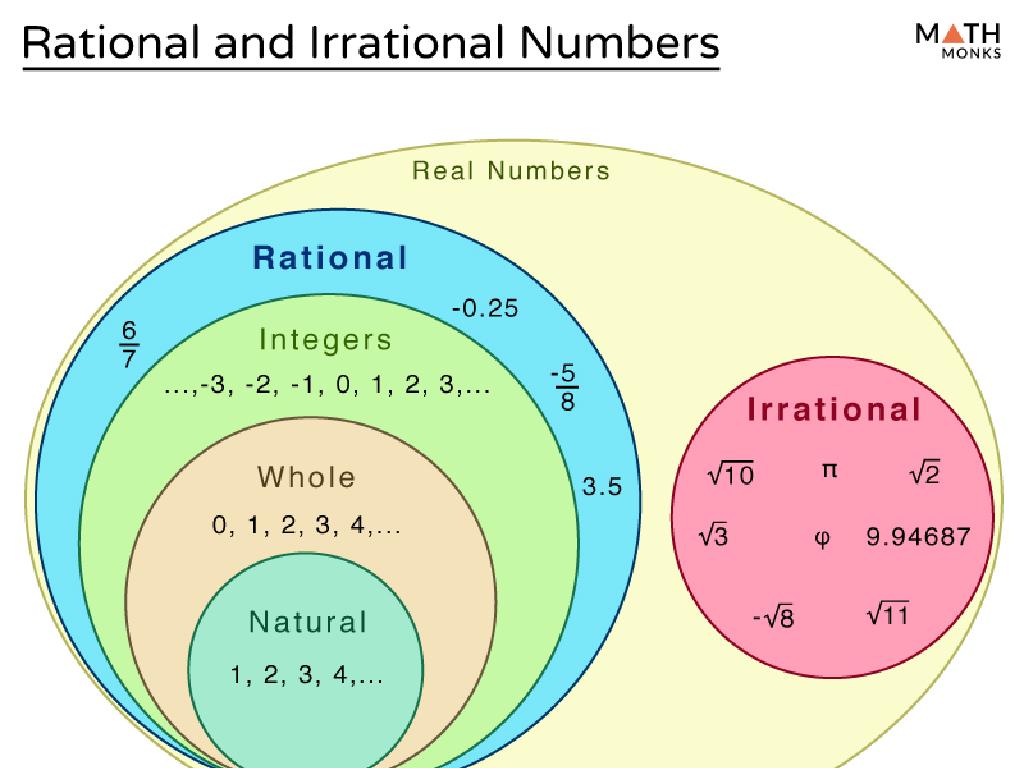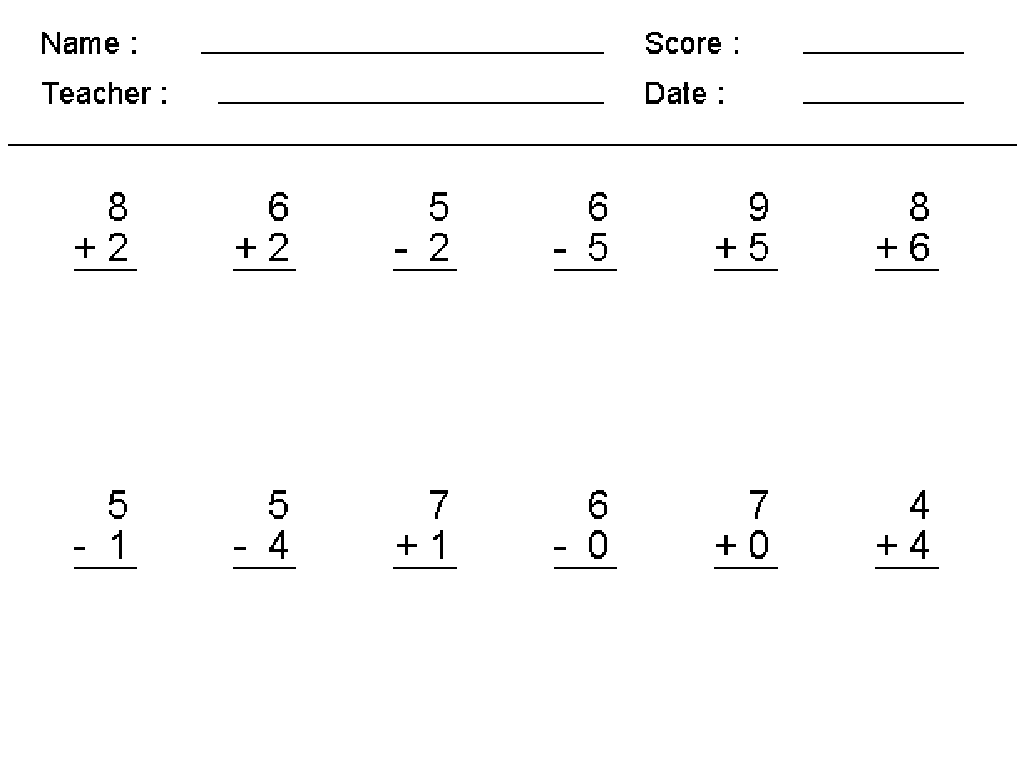Convert Between Customary And Metric Systems
Subject: Math
Grade: Seventh grade
Topic: Units Of Measurement
Please LOG IN to download the presentation. Access is available to registered users only.
View More Content
Understanding Measurement Systems
– Explore measurement systems
– Importance of conversion skills
– Converting units is essential in science, travel, and cooking.
– Customary system overview
– Used primarily in the U.S. for daily life measurements.
– Metric system basics
– Internationally recognized system based on multiples of ten.
|
This slide introduces students to the concept of different measurement systems and the importance of being able to convert between them. The customary system, used mainly in the United States, includes units like inches, feet, and pounds. The metric system, used by most of the world, is based on units such as meters, liters, and grams, and is easier to convert due to its base-10 structure. Understanding both systems is crucial for students as it allows them to navigate various disciplines and everyday situations that require measurement. Emphasize real-world applications such as following recipes, measuring for construction projects, or understanding science experiments. Provide examples of each system and encourage students to think of situations where they would need to convert measurements.
Understanding the Customary System
– Length: inches, feet, yards, miles
– Smaller to larger: 12 inches in a foot, 3 feet in a yard, 1760 yards in a mile
– Volume: cups, pints, quarts, gallons
– Liquid volumes: 2 cups in a pint, 2 pints in a quart, 4 quarts in a gallon
– Weight: ounces, pounds, tons
– Heavier weights: 16 ounces in a pound, 2000 pounds in a ton
– Usage of the Customary System
– Common in the U.S. for daily life, recipes, and many forms of trade
|
This slide introduces students to the units of measurement in the Customary System, commonly used in the United States. It’s important to familiarize students with the different units for length, volume, and weight, and how they convert between each other. Emphasize the practical applications of these units in everyday life, such as cooking, measuring distances, and weighing objects. Provide examples of when to use each unit and ensure students understand the hierarchy and conversion factors within the system. Encourage students to practice converting between units as a class activity.
Understanding the Metric System
– Metric units of length
– mm, cm, m, and km for measuring distance
– Metric units of volume
– mL and L for measuring liquid volume
– Metric units of mass
– g and kg for weighing objects
– When to use Metric System
– Used globally, in science, and for precision
|
This slide introduces the metric system, which is an international system of measurement used around the world. Students should understand that the metric system is based on units of ten, making it easier to convert between units. Length is measured in millimeters (mm), centimeters (cm), meters (m), and kilometers (km). Volume is measured in milliliters (mL) and liters (L), and mass is measured in grams (g) and kilograms (kg). The metric system is commonly used in scientific studies due to its precision and ease of conversion. It’s also the standard for most countries, so it’s important for students to be familiar with these units for travel, science classes, and many careers in STEM fields.
The Importance of Unit Conversion
– Why learn to convert units?
– Conversion in science & travel
– Scientists use different units; travelers face varying measurement systems.
– Unit conversion in cooking
– Recipes may use metric or customary units, requiring conversion for accuracy.
– The role in international trade
– Global trade relies on understanding and converting between measurement systems.
|
Understanding how to convert between customary and metric units is a vital skill in various real-world scenarios. For instance, in science, different countries may use different units for measurement, making conversion essential for collaboration and understanding. International travel also exposes one to different measurement systems, whether it’s for gauging distances, temperatures, or volumes. In cooking, recipes often come from different parts of the world, each using their preferred units, so conversion ensures the dish turns out as intended. Lastly, international trade hinges on the ability to convert between units to maintain consistency and fairness in product quantities and prices. Encourage students to think of times they’ve encountered different units in their lives and how conversion could be applied.
Conversion Basics: Customary to Metric
– Learn conversion factors
– A conversion factor is a number used to change one set of units to another, by multiplying or dividing.
– Using a conversion table
– A table that lists equivalent measurements between units; use it to find how many of one unit equals another.
– Convert 5 feet to meters
– To convert 5 feet to meters, use the factor 1 foot = 0.3048 meters. So, 5 feet is 5 x 0.3048 meters.
– Practice with different units
|
This slide introduces students to the concept of converting between the customary and metric systems. Start by explaining conversion factors, which are essential for changing one unit of measurement to another. Show students how to use a conversion table effectively by locating the correct factor and applying it to the quantity they wish to convert. For the practice example, demonstrate the conversion of 5 feet to meters using the specific conversion factor. Encourage students to practice with different units and conversion factors to solidify their understanding. Provide additional examples and exercises for students to work on, ensuring they grasp the concept of unit conversion.
Hands-on Conversion: Customary to Metric
– Step-by-step unit conversion guide
– Example: 2 gallons to liters
– 2 gallons is approximately 7.57 liters
– Example: 500 grams to pounds
– 500 grams is roughly 1.10 pounds
– Practice with real objects
|
This slide is designed to provide students with a clear guide on how to convert between customary and metric units. Start by explaining the step-by-step process of unit conversion, including the importance of knowing the conversion factors. For the examples, show the calculations on how to convert 2 gallons to liters (1 gallon = 3.78541 liters) and 500 grams to pounds (1 gram = 0.00220462 pounds). After explaining the examples, encourage students to practice with real-life objects that can be measured and converted between systems. This hands-on approach will help solidify their understanding of the conversion process.
Conversion Practice: Customary and Metric Systems
– Collaborative problem-solving
We’ll solve some conversion problems as a class.
– Discuss strategies and errors
Let’s talk about how to approach these problems and where we might slip up.
– Work on individual problems
Try some problems on your own to apply what you’ve learned.
– Share and review answers
We’ll go over the solutions together to ensure understanding.
|
This slide is focused on engaging students in both collaborative and individual practice of converting between customary and metric units. Start by solving a few problems as a class to model the process and engage students in discussion. Emphasize the importance of understanding both systems and the common conversion factors. After the group activity, allow students to work on problems individually, which will help them apply the strategies discussed. Encourage them to take note of any mistakes they make to learn from them. Conclude with a review session where students can share their answers and clarify any misunderstandings. Provide a variety of problems with different levels of difficulty to cater to all students.
Class Activity: Measurement Scavenger Hunt
– Find and measure classroom items
– Convert measurements to new units
– Use conversion formulas for metric and customary units
– Record your findings
– Share with the class
– Discuss how measurements vary by unit
|
This interactive activity encourages students to apply their knowledge of unit conversion in a fun and engaging way. Provide students with a list of items to find and measure within the classroom using rulers, tape measures, or other tools. They should then convert these measurements into different units, practicing the use of conversion formulas between the customary and metric systems. Have them record their original measurements and conversions. After the activity, facilitate a discussion where students share their findings and reflect on how the measurements change when expressed in different units. This will reinforce their understanding of the size and scale of both metric and customary units. Possible variations of the activity could include measuring the same item in pairs for comparison, converting between units of length, volume, and mass, or even creating a display of their findings for the classroom.
Wrapping Up: Unit Conversion
– Recap of conversion principles
– Why unit conversion matters
– Converting units is essential in science, cooking, and travel.
– Homework: Practice worksheet
– Solve problems converting between customary and metric units.
– Keep practicing at home!
– Try additional problems to reinforce today’s lesson.
|
As we conclude today’s lesson on converting between customary and metric systems, it’s important to emphasize the practical applications of this skill in real-world scenarios such as cooking, traveling, and understanding scientific data. The homework assignment is a worksheet that includes a variety of conversion problems to reinforce the concepts learned in class. Encourage students to practice these conversions at home to gain fluency in switching between systems. Remind them that mastery of unit conversion is not only crucial for academic success but also for everyday problem-solving. Provide tips on how to approach conversion problems and remind them of the resources available should they need extra help.






